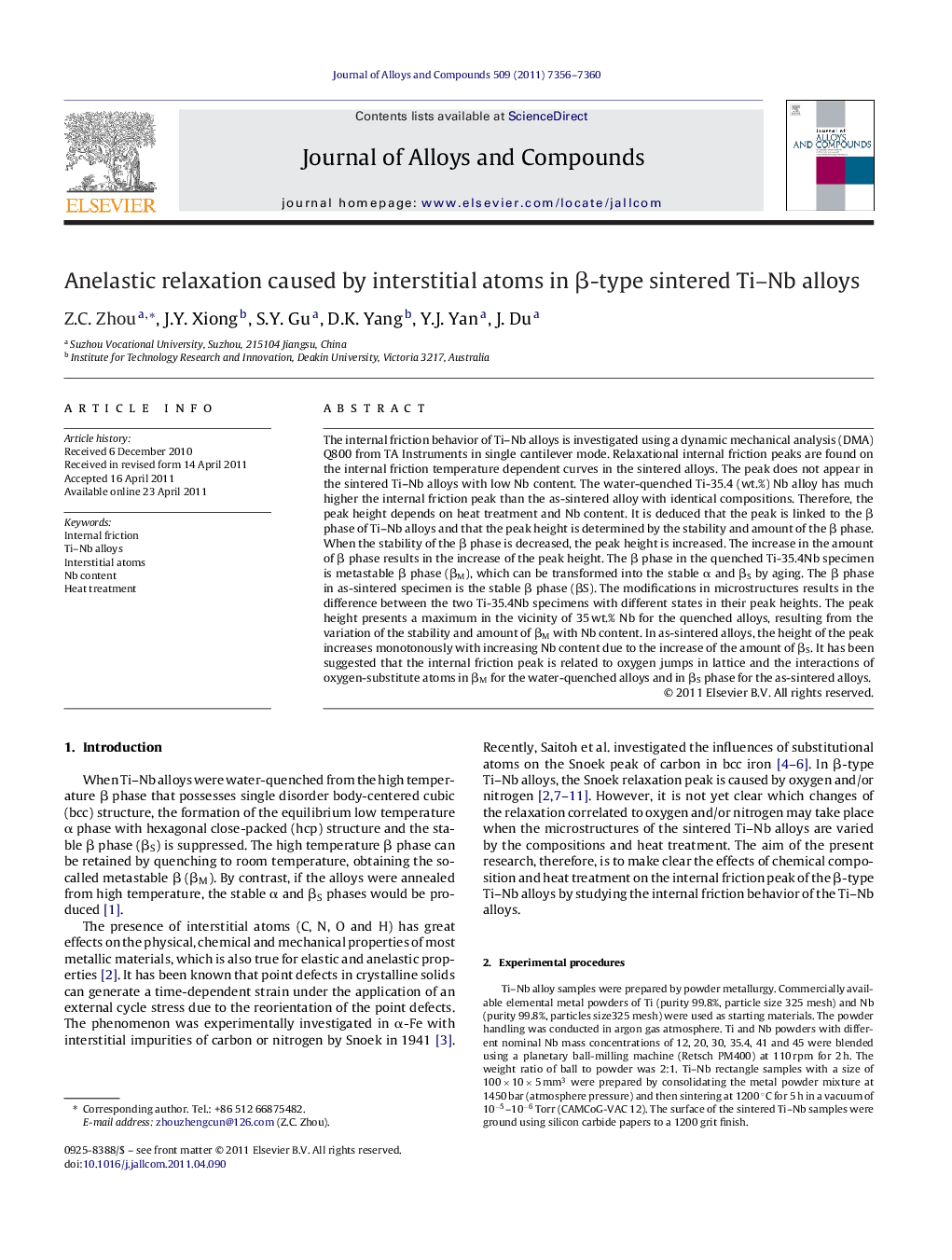| کد مقاله | کد نشریه | سال انتشار | مقاله انگلیسی | نسخه تمام متن |
|---|---|---|---|---|
| 1617498 | 1005688 | 2011 | 5 صفحه PDF | دانلود رایگان |

The internal friction behavior of Ti–Nb alloys is investigated using a dynamic mechanical analysis (DMA) Q800 from TA Instruments in single cantilever mode. Relaxational internal friction peaks are found on the internal friction temperature dependent curves in the sintered alloys. The peak does not appear in the sintered Ti–Nb alloys with low Nb content. The water-quenched Ti-35.4 (wt.%) Nb alloy has much higher the internal friction peak than the as-sintered alloy with identical compositions. Therefore, the peak height depends on heat treatment and Nb content. It is deduced that the peak is linked to the β phase of Ti–Nb alloys and that the peak height is determined by the stability and amount of the β phase. When the stability of the β phase is decreased, the peak height is increased. The increase in the amount of β phase results in the increase of the peak height. The β phase in the quenched Ti-35.4Nb specimen is metastable β phase (βM), which can be transformed into the stable α and βS by aging. The β phase in as-sintered specimen is the stable β phase (βS). The modifications in microstructures results in the difference between the two Ti-35.4Nb specimens with different states in their peak heights. The peak height presents a maximum in the vicinity of 35 wt.% Nb for the quenched alloys, resulting from the variation of the stability and amount of βM with Nb content. In as-sintered alloys, the height of the peak increases monotonously with increasing Nb content due to the increase of the amount of βS. It has been suggested that the internal friction peak is related to oxygen jumps in lattice and the interactions of oxygen-substitute atoms in βM for the water-quenched alloys and in βS phase for the as-sintered alloys.
► In this study, the internal friction of the sintered β-type Ti–Nb alloys is measured using a dynamic mechanical analysis (DMA) Q800 from TA Instruments in single cantilever mode. The effects of heat treatment and compositions on the internal friction behavior of Ti–Nb alloys were investigated and discussed. The internal friction peak height is determined by the stability and amount of β phase. The peak height presents a maximum in the vicinity of 35 wt.% Nb for the quenched alloys, resulting from the variation of the stability and amount of βM with Nb content. In as-sintered alloys, the height of the peak increases monotonously with increasing Nb content due to the increase of the amount of βS. It has been suggested that the internal friction peak is related to oxygen jumps in lattice and the interactions of oxygen-substitute atoms in βM for the water-quenched alloys and in βS phase for the as-sintered alloys.
Journal: Journal of Alloys and Compounds - Volume 509, Issue 27, 7 July 2011, Pages 7356–7360